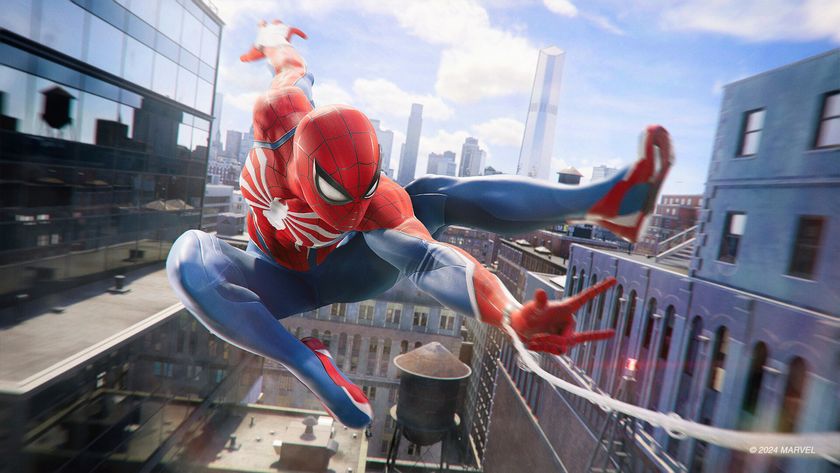Hearthstone designers on The Witchwood lore, keeping an eye on Warlocks, and the Legend mentality
Dave Kosak and Dean Ayala enlighten us on the upcoming expansion and deeper design philosophies
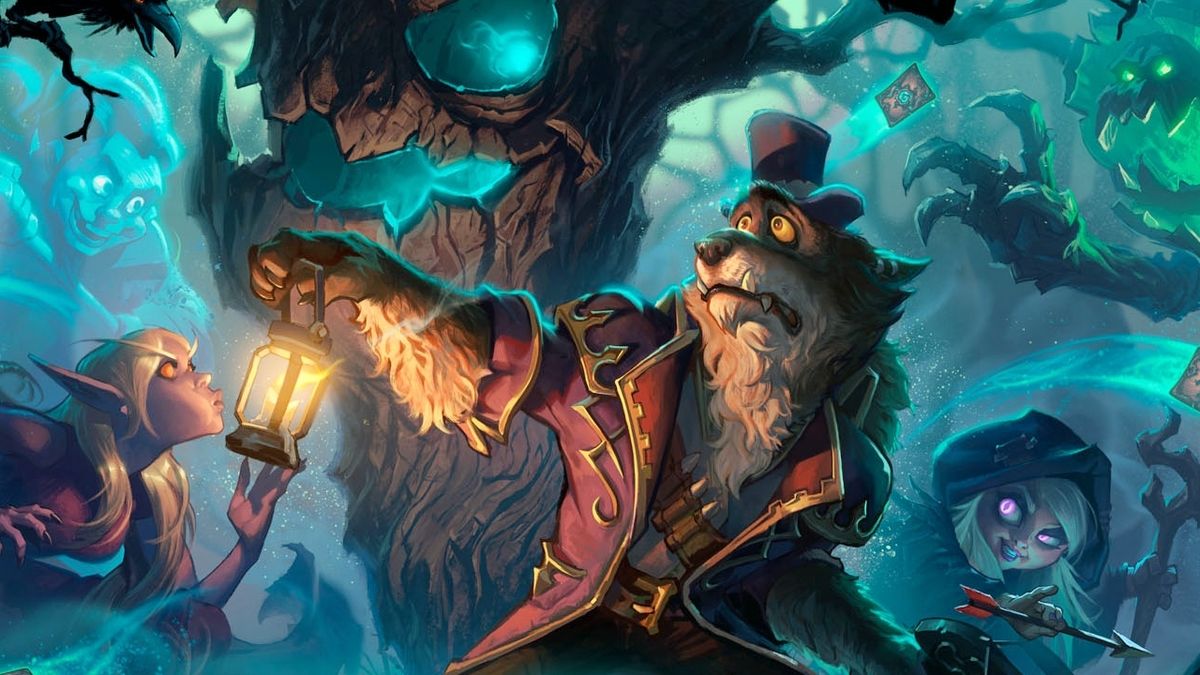
Something wicked this way comes - and I mean that in both senses of the word 'wicked.' Hearthstone's next expansion, The Witchwood, is a spooky set debuting sometime in April, with a focus on the werewolf Worgen race and new deck-building mechanics revolving around even- and odd-cost cards. It also kicks off the Year of the Raven, a time of sweeping change where old sets rotate out of Standard and notorious cards are moved to the Wild-only Hall of Fame. To help contextualize all the exciting possibilities that come with a new expansion, I talked to Hearthstone game designers Dave Kosak and Dean Ayala (who you might recognize from The Witchwood reveal and recent Hearthside Chat videos, respectively). Join us as we geek out over World of Warcraft lore, the decisions that go into creating new cards, and how the hell someone like me might possibly make it to Legend rank.

12DOVE: How do Genn Greymane and Hagatha fit into The Witchwood?
Dave Kosak: Hagatha's our main villain in the expansion. Hagatha is really the force that's changing and warping the Witchwood into what it is and changing the creatures of the Witchwood to try and overwhelm Gilneas. So Genn is trying to fight against that. [Along with Baku the Mooneater], those are our main characters - then we have four monster hunter heroes who will appear in the Monster Hunt, and they will also be major characters in it. So we have a nice little cast of characters.
Which areas in World of Warcraft should players be visiting to get themselves pumped up for The Witchwood? Gilneas seems like the obvious one.
Kosak: I've always enjoyed the Worgen starting area. It's worth playing through that, if you've never met Genn Greymane - who's an important part of WoW lore right now, especially with the Battle for Azeroth going on. Play the Worgen starting area. It's a really fun, very atmospheric area that'll get you pumped for the Witchwood. I think that's the main one.
Dean Ayala: One of my favorite in-game cinematics was one of Genn and Sylvanas that I think came out in Legion, where they start battling each other. It was the sickest thing I've ever seen.
With Battle for Azeroth on the horizon, was it a conscious decision to have Genn be a prominent face in Hearthstone around the same time?
Sign up to the 12DOVE Newsletter
Weekly digests, tales from the communities you love, and more
Kosak: It's more important to make sure that the two games aren't working cross purposes. We don't necessarily try and sync them up, because our player base isn't necessarily completely synced up. We just want to make sure that we're not contradicting. But the fact that Genn Greymane's a major player in Battle for Azeroth is part of what makes this expansion exciting for us. It's also important that, even if you've never experienced Warcraft lore before, you're going to get a feel for who the Worgen are and what's going on. We don't have a lot of storytelling opportunities in Hearthstone, but we do want to make sure that you get that sense of atmosphere. That's important to us - to make sure it stands on its own.
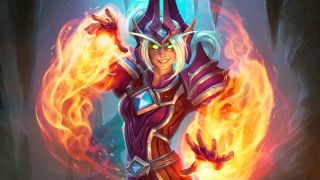
If you're a fan of pro players or aspire to be one yourself, be sure to read our Hearthstone esports interview to see what's changing for the better this year.
When you're coming up with the new expansion, how do you go about looking for the next chunk of Warcraft lore to dive into?
Kosak: Everything's very collaborative on Hearthstone, and we have team-wide brainstorming that's like, "Hey guys, what do we want to do? What do you want to see in the next set?" And there's easily like 100 different ideas. I think you'll probably guess a lot of the things that are up on the board; there are all these things that we would be fun for us to tackle. A lot of it is very Warcraft, but there are also some themes that aren't necessarily Warcraft that we can play with. It's a huge list of ideas, and the tough part is paring down what the next one should be. We like to vary the themes; we like to keep people on their toes. We had a very dark, very serious expansion with Knights of the Frozen Throne. All our heroes were turning into Death Knights. And so we followed up with what I would call more of a fun romp with Kobolds & Catacombs. So then we wanted something that just thematically felt different. You know we went with a scary set. A monster set. There's a lot of brainstorming, and then we try and figure out, "Okay what feels different than what we've done?" An idea's good when there's just a whole lot of card ideas flowing out of it. Like, "Oh, we could do this mechanic, or that mechanic!"
Ayala: Everyone's passionate about a different area of Warcraft lore. I think you could basically just name any raid, and it's on the board. [laughs] Some ideas that come up are like, "Wouldn't it be cool if we did an expansion around the Vendors of Azeroth?" You also have these characters like Snowchugger and stuff that are big hits among a lot of Hearthstone players. You just create these new Hearthstone characters, and it makes it easier to go back to things that are famous from the Hearthstone version of Warcraft lore, which is really cool. I think over time, that just becomes easier as well.
How much does lore affect card design?
Kosak: There's a top-down approach, where you start with a fantasy and you try and build a mechanic, or the bottom-up approach, where you build the mechanic and then build the fantasy around it. And we do a lot of both on Hearthstone. So we didn't start with Genn Greymane and then try and figure out a mechanic - we had a very cool mechanic, and we wanted characters to sort of embody that mechanic. By having Genn Greymane be a figurehead of that mechanic, he becomes important, and we wanted him to be an important character.
Ayala: [With the exception of Genn,] the Worgen designs are probably the most top-down. It'd be pretty weird if we did Gilneas and The Witchwood set without some sort of Worgen transformation mechanic. We really wanted to do that, so it's just a matter of "Ok how can we get that idea - which is such a core fantasy, humans turning into werewolves - how can we get that in?" [That manifested itself as] the idea that they swap Attack and Health when in your hand.
With each expansion, how many deck archetypes do you think is a good number for each class?
Ayala: In design, we usually try to make two or three per class, then some of those taper out over time. Really the number is as high as we can get it, but I think we're happy if we can create a totally new archetype for each class; that's quite difficult to do. If you asked a variety of individuals, their definition of a new archetype is different. For some people, unless this archetype is Tier 1 and played by professional players, it's not actually real. For us, if it's being played at some amount, and it's fun for some level of player, that's a success for us. If we can deliver a fun experience for some of the audience, that's really the goal.
What does [Hearthstone development team] Team 5 think are the most crucial cards that are leaving the Standard meta for Year of the Raven?
Ayala: In terms of change, Drakonid Operative is a big one.
Kosak: Yeah, I feel that one personally. I'm a big Dragon Priest fan.
Ayala: The Old Gods are really big, too; N'Zoth has been an option for a long time. I'm actually pretty sad to see all the Old Gods leave Standard, just because I think they're one of the most successful things we've done. It was insanely difficult to say, "Ok, they're Old Gods, they've gotta be 10 mana!" Designing for very interesting 10-mana cards is a huge challenge, but I think that was very successful. So having N'Zoth leave, and of course Yogg... C'Thun is still played at a pretty high rate in the lower ranks nowadays, so I think C'Thun is really fun for people. Barnes leaving is really high impact for a lot of decks that exist. Jade is a huge one too, because a whole deck type is just basically whipped out of Standard.
"It's important for a lot of players to have a deck that they identify with."
Do you think it's even possible to have a meta where all nine classes are equally viable?
Ayala: It's certainly possible, and we've been pretty close a lot of different times - but it's not even necessarily the goal. If all classes had a 50% win rate exactly, it's not like we would look at the data and be like, "Based on this, success!" It's more about population size than it is about win rate, what players feel like they can do - as long as each of the classes has something that they can go to that doesn't feel like you're just totally noncompetitive. Maybe we can get to a point where every class is equally played, but when you look at the metagame, is there something fun for each of the classes, and are people generally happy? That's the goal of it - sort of a soft goal, because it's hard to equate with data exactly that that's happening - but the goal is mostly the perception of fun, rather than looking at numbers and saying we did a good or bad job.
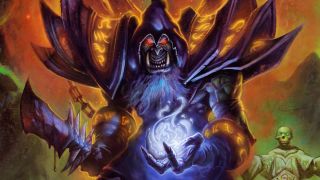
Why no Warlock nerf with the most recent changes?
Ayala: It's something we thought a lot about, actually. Warlock itself, the perception of its power level I think is not out of control at this point; people feel like they can beat Warlock, and I don't think there's been a huge outcry of "Warlock is too powerful and needs to get nerfed!" And it hasn't been true in data. There's definitely been times in the past where something hasn't been powerful in data, but people have been very upset by it, and we have made a change - because perception is sometimes more important than actual number values in the background. And with rotation happening, there's going to be a bunch of new decks - but Warlocks, as a lot of people have pointed out, don't lose a lot. Mistress of Mixtures, maybe N'Zoth out of their control packages - but the core thing of what they're doing with [Carnivorous] Cube and Possessed Lackey still exists. I think that's the number one thing we're looking at, post-rotation: did Warlock not lose enough in comparison to everybody else, and what did they gain in Witchwood that made their decks better or worse? The hope is always that we don't have to make a change, because it's important for us that players feel like it's them figuring out the puzzle of the metagame and being able to develop new decks to solve issues, rather than us coming in and changing the meta by hand.
"Legend shouldn't be a gimme. You should have the chops to fight against those other players and pull out the wins."
Kosak: Particularly if you've invested in Warlock and you're excited about Warlock. You don't want to have it just change arbitrarily because designers are like "Ah, too much!"
Ayala: Yeah, exactly. It's something we're going to look at but we don't feel like it's necessary today.
With Coldlight Oracle moving to the Hall of Fame, are you trying to nullify mill decks in Standard, or are those strategies still worthwhile?
Ayala: Mill decks are an interesting beast, because for a lot of people, it's their favorite deck - some people play Mill Rogue and that's all they play, 'cause they love mill decks. [laughs] And that's great - it's important for a lot of players to have a deck that they identify with. I think if Mill Rogue were the most popular deck in Hearthstone that might be quite a frustrating experience, but no, it's not our purpose to say "Oh, we don't like mill decks, so therefore Coldlight is being removed". I'm sure mill decks will still exist in some form.
I really like the recent adjustments to Ranked, where you only drop four ranks at the end of each season, but it feels like it positions Legend rank as something that anyone can attain given enough time. Do you think every player deserves to be able to hit Legend?
Ayala: It's really interesting... I often hear [things like] "Based on math, you'll eventually get to Legend!" But realistically, in practice, that's not really true. Even if you start at rank 5, in order to go plus-25 over the course of the season, it just doesn't happen unless you are very good at Hearthstone. I understand the mathematical argument, where if you played a billion games, you'd probably get there - but in practice, I think it's really the skilled players that are getting to Legend.
Kosak: I feel like Legend - that star, that card back - should be something that's not a gimme. You should have the chops to fight against those other players and pull out the wins.
Ayala: It should mean something, and I think it does. We also made the change where every rank now has 5 stars. Progressing from 22 to 15 or whatever, there's a lot more stars involved, so you have to win more games in order to make that happen. So I think Legend still means a lot, even if you don't get reset as far - you should still feel very good about that. I think so far in data, it's not like we're seeing a huge influx of Legend players - they're still less than 1% of the population, or something like that.
Kosak: It wasn't important to us to spread the people out, so that your skill level matched up a little better. We had a lot of people bunched up around 20, so when you were playing on rank 20 you had no idea [what you were up against]. I was playing the other week, and went up against an all-goldens Pirate Warrior, and I was like "What is this guy doing at 20? Dude, get out of my rank 20!" [laughs] It spread players out, which seems to be working, and I think that's great for the game overall. I think it's going to be a much better experience at any point on the ladder.
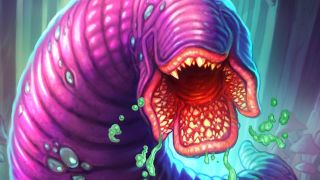
Walk me through what happened with the unexpected power level of Corridor Creeper.
Ayala: We played a lot of Token decks originally; it was really powerful obviously in Token Shaman decks. But sometimes when you're playtesting, things don't seem as powerful as they end up being in live. We knew there were some really powerful Token decks going on, but I don't think we foresaw that Corridor Creeper was going to be so good in such a wide variety of decks. We actually had a pretty good feel for the power level of what it was like in decks like Token Paladin and Token Shaman - but cards like Patches made the cost go down so rapidly that, even if you drew the card on turn 3 or 4, you were still pretty happy about that. It was just sort of a miss in terms of the balance team - if we end up nerfing a card, then it's pretty much admitting that "Hey, this card ended up being slightly more powerful than we had planned on." For Corridor Creeper specifically, it wasn't really a miss in terms of "Oh, we had no idea this card is going to be powerful," it's just powerful across such a wide variety of classes that made it feel like it was showing up so often that...
Kosak: It became an auto-include.
Ayala: Yeah. It just made the experience of "Okay, what deck am I going to play against that's playing Corridor Creeper?" If we're so about the diversity of experiences of the decks that you run into and everything feeling different, when there is a card in neutral that's so powerful and that's included in such wide variety of decks, that's the thing that we react to most quickly.
Is it ever disappointing to see a card that was like your baby during development fall by the wayside when the set goes live?
Kosak: I don't think we get a lot of babies during development, because it's such a collaborative process, and everybody is constantly looking over and writing cards and they're renamed, and juggled, the art changes. It's never quite your baby.
Ayala: It's really, really hard for someone to design a card and have it be unchanged in some way. We go through so many designs over the course of the set. When the Initial Design team ships us a set, they're working with like 250 cards a lot of times before they're putting it down to 150 or something like that, and then we cut probably 50 more, then build 35 more... As a game designer in general, you're used to not getting attached to ideas. [laughs]
On a more personal note, what advice would you have for someone who is stuck at rank 2 and can't break through that wall to Legend?
Kosak: [laughs] I've never even seen rank 2 from an airplane flying overhead. I've never come close to rank 2. I'd be interested in tips to get me past rank 15.
Ayala: The biggest tip that I have is: just keep pressing the button. A lot of times, when people get frustrated and you lose like two games in a row, you're always like "Argh, there must be something wrong with my deck," or it's "Ah, I'm getting frustrated right now, so I'm going to go and play this other thing." And it's totally counter to what you should be doing, which is taking the thing that you know, that you've been doing pretty well with - I assume, if you're rank 2 - and trying to understand what the mistakes you might've made. I always try to go in with a set of games, like "Ok, I'm going to play 10 games in a row, and after a game is over, win or lose, I'm going to slam the 'Play' button again and just keep going." And maybe you end those sessions like 2 and 8 or whatever - but you end up learning a lot about how to play the deck. Most all decks are super nuanced, and then you get to understand the match ups a lot more. Playing different things is really awesome, but if you really want to improve at one thing, a lot of decks are so detailed that you're never going to learn the ins and outs by just playing like five games with it.
Kosak: Just push the button. [laughs] Even a great professional player at that rank is at, what, 52% win rate?
Ayala: Yeah, it depends, really - but a lot of really great players are, y'know, 52, 55, 56%. Even if you're a 60% win rate player, if you're playing a lot, the idea of going 0 and 4, mathematically, is not that unrealistic. [laughs] It's going to happen sometimes.
If you or someone you know is just starting out in Hearthstone, be sure to check out our guide to the best Hearthstone decks for beginners!
Lucas Sullivan is the former US Managing Editor of 12DOVE. Lucas spent seven years working for GR, starting as an Associate Editor in 2012 before climbing the ranks. He left us in 2019 to pursue a career path on the other side of the fence, joining 2K Games as a Global Content Manager. Lucas doesn't get to write about games like Borderlands and Mafia anymore, but he does get to help make and market them.
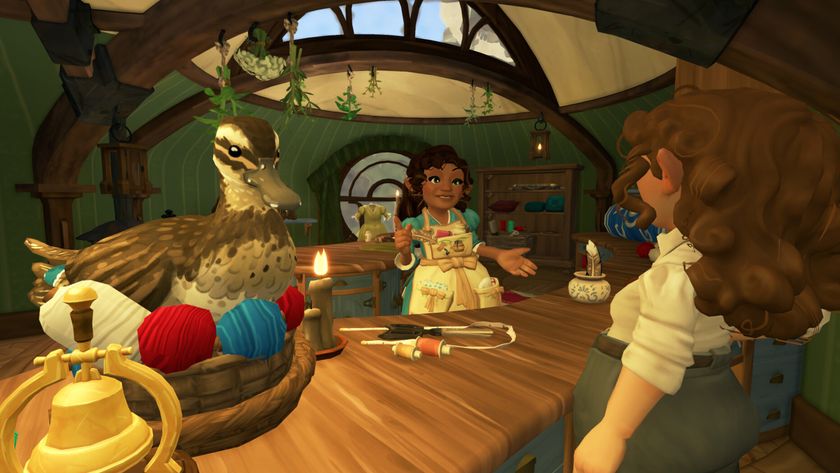
Lord of the Rings life sim Tales of the Shire delayed again, now coming in July: "Every detail will be just right"
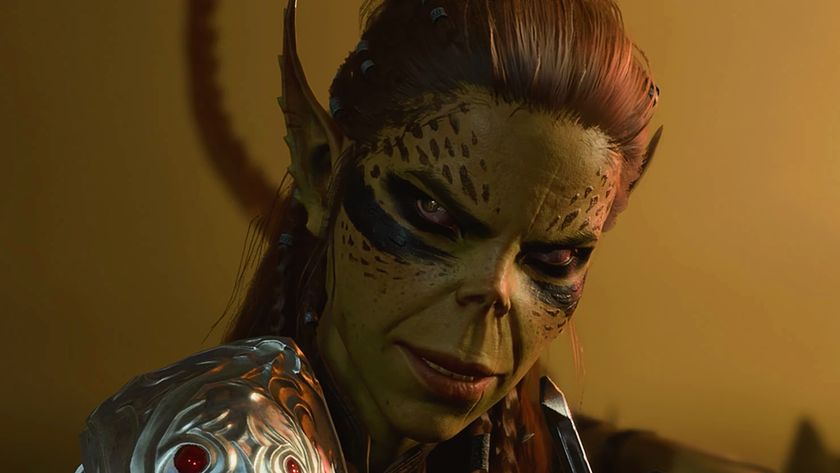
Baldur's Gate 3 Lae'zel actor was "paranoid" about making the githyanki girlfriend’s voice "lower and lower" through Act 3 until she realized "it really works with her character development"
Most Popular






